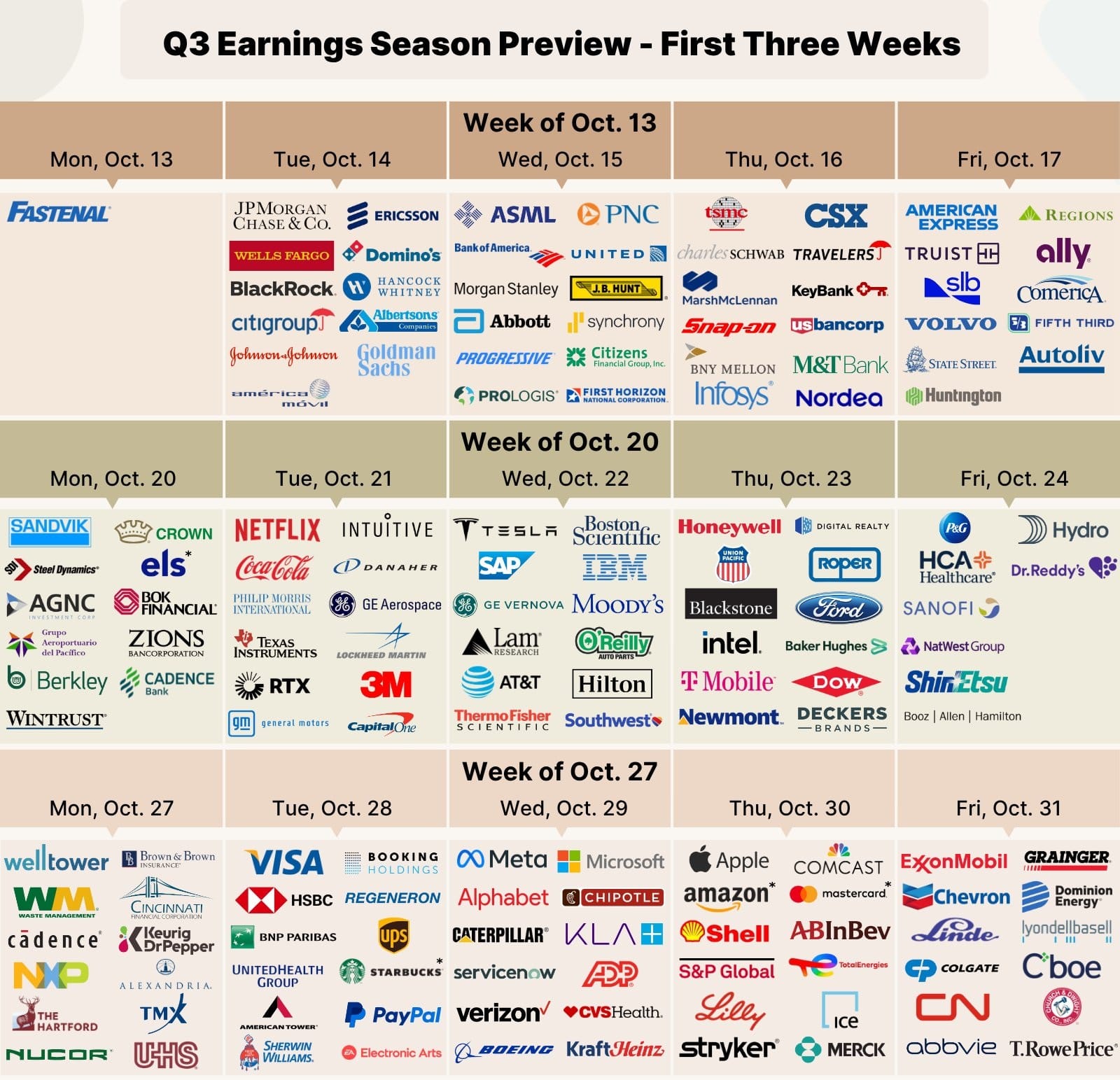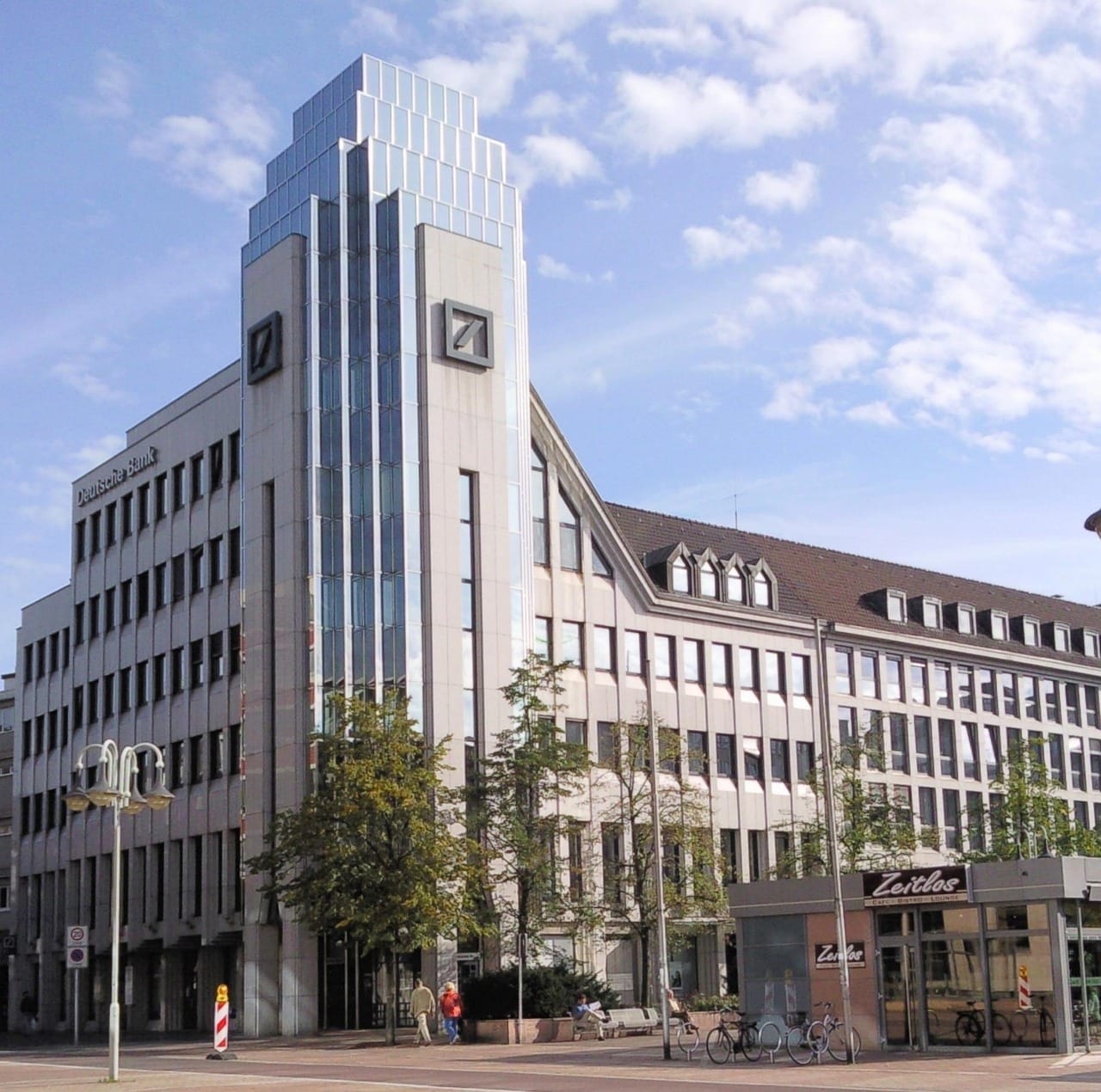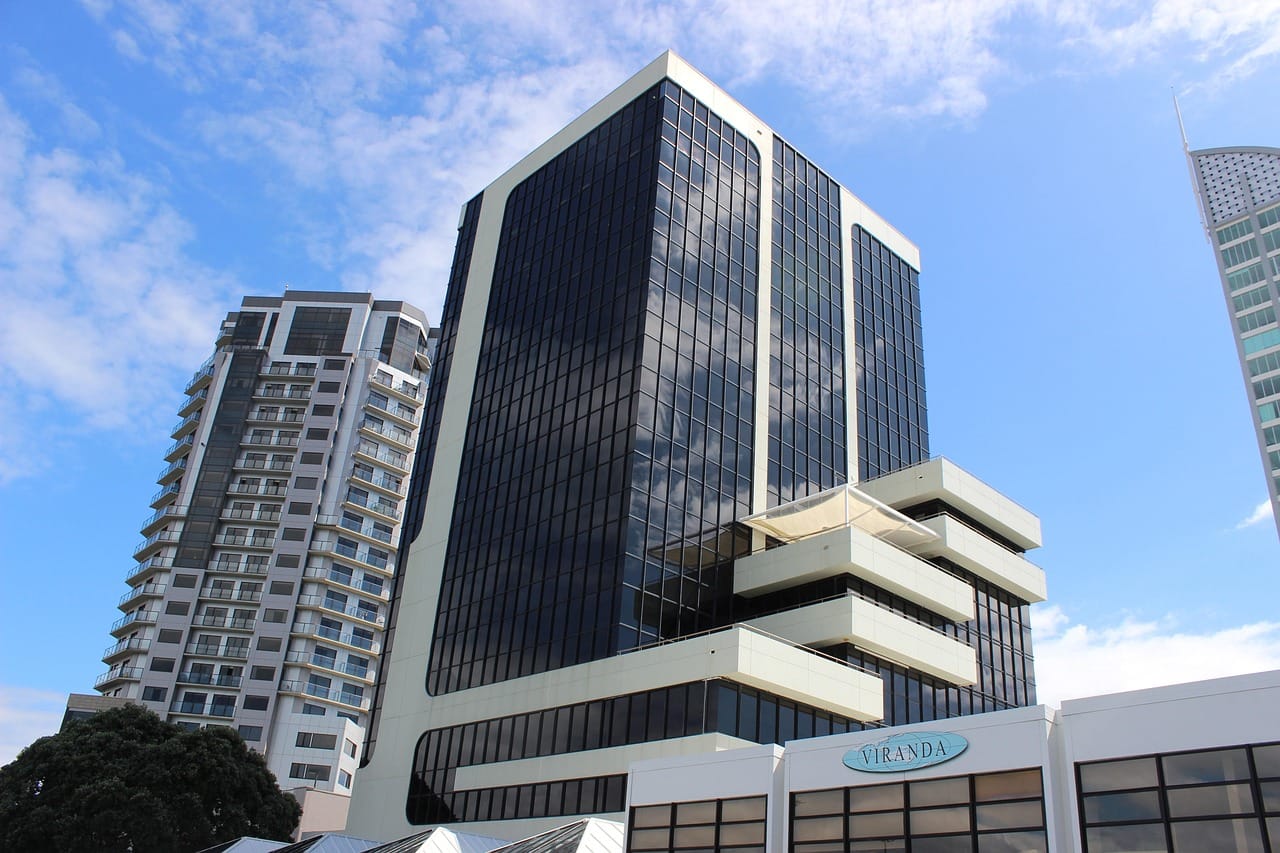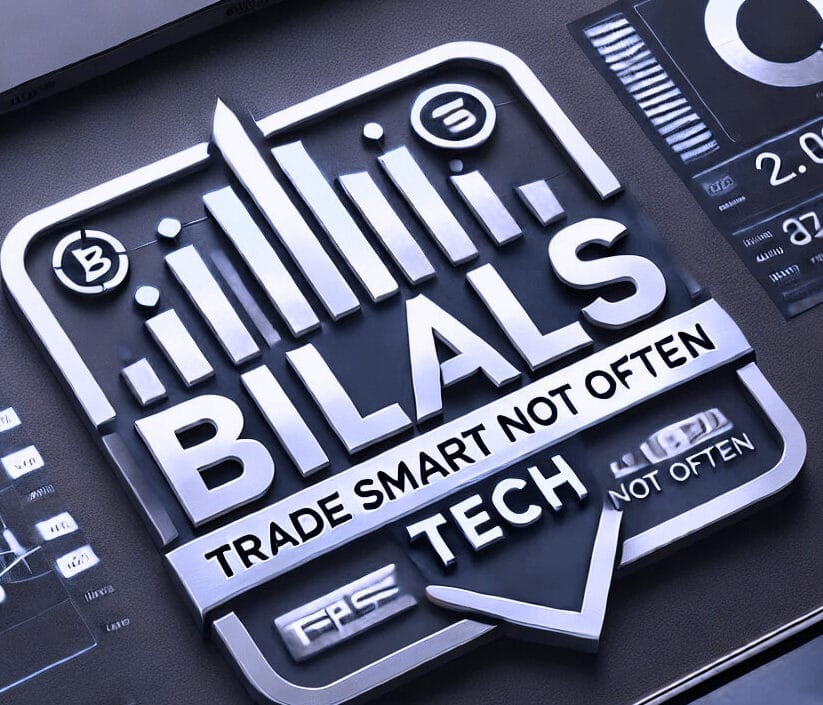North America News
US Stocks Finish Higher for Second Straight Session, Lifted by Trade Optimism
U.S. equity markets closed higher on Thursday, marking a second consecutive day of gains, though all major indices finished well below their session highs. Early momentum was fueled by renewed trade optimism, including progress on a U.S.–UK deal and reports that China tariffs could soon be reduced.
- Dow Jones Industrial Average rose by 54.48 points or 0.62%, closing at 41,368.45. The index was up as much as 659.25 points earlier in the session.
- S&P 500 climbed 32.66 points or 0.58%, ending the day at 5,663.94. It had reached an intraday high of 88.82 points.
- NASDAQ Composite led gains, up 189.98 points or 1.07%, finishing at 17,928.14. At its peak, the index rose by 357.84 points.
Traders pointed to reports that the Biden administration is considering cutting tariffs on Chinese goods to around 50% from the current 145% as a key catalyst. Market watchers say this could ease supply chain strain, though it may come with a price: while some goods might return to U.S. shelves, they’ll likely cost more due to the still-elevated tariff levels.
30-Year Treasury Auction Draws Weak Demand, International Buyers Retreat
The U.S. Treasury auctioned off $25 billion in 30-year bonds at a high yield of 4.819%, slightly above the 4.812% when-issued level. The auction saw a tail of +0.7 basis points, worse than the six-month average of -0.3 bps, and a bid-to-cover ratio of 2.31x compared to the typical 2.45x. Direct bidders took 27.21%, above average, while indirect demand dropped to 58.88%. Analysts graded the auction a D+, pointing to lower foreign appetite and weaker overall demand.
NY Fed: Short- and Medium-Term Inflation Expectations Move Higher
The New York Federal Reserve’s latest survey showed that 1-year inflation expectations rose to 3.63% from 3.58% the previous month. The 3-year outlook jumped to 3.2%—its highest level since July 2022—while the 5-year forecast slipped to 2.7% from 2.9%. The report also noted declines in job market expectations, earnings growth, and income sentiment, hinting at potential consumer unease despite rising inflation outlooks.
US Wholesale Inventories Edge Up Slightly in March, Sales Growth Slows
March wholesale inventories in the U.S. rose 0.4%, slightly under the 0.5% economists had projected. This follows a revised 0.5% increase in February. Meanwhile, wholesale sales grew 0.6%, a slower pace compared to the revised 2.0% surge in February. The data suggests inventory building continues steadily, while sales momentum has cooled off heading into Q2.
U.S. Jobless Claims Come in at 228K, New York Leads Weekly Increases
Weekly initial jobless claims totaled 228,000, just below the 230,000 forecast, with the prior week revised lower to 241,000. The 4-week moving average edged up to 227,000. Continuing claims fell slightly to 1.879 million, also under estimates.
New York accounted for the largest increase in claims, rising by over 15,000, followed by Massachusetts and Georgia. The largest declines were seen in Connecticut, Rhode Island, and Missouri. While the overall trend remains stable, regional fluctuations are becoming more pronounced.

U.S. Unit Labor Costs Jump 5.7% in Q1, Productivity Contracts Slightly
Preliminary data for Q1 shows U.S. unit labor costs rising 5.7%, above the 5.1% forecast and sharply higher than Q4’s revised 2.0%. Meanwhile, nonfarm productivity fell 0.8%, slightly below the -0.7% estimate.
These figures suggest lingering inflation pressure tied to wage growth, though analysts caution the data is volatile and more lagging than forward-looking. The report may support hawkish interpretations of labor market tightness despite broader disinflation narratives.

White House Mulls Slashing China Tariffs to 50% as Retailers Brace for Policy Shift
According to a New York Post report, U.S. officials are actively considering a plan to reduce tariffs on Chinese imports from the current 145% to between 50% and 54%, potentially as early as next week. The reported move comes amid efforts to restart trade negotiations and lower supply chain stress ahead of key retail shipping windows.
South Asian nations like Vietnam and Bangladesh may see their tariffs lowered to around 25% as part of a broader regional recalibration.
Industry sources suggest retailers have already begun pricing goods based on a range of potential tariff scenarios. Jay Foreman, CEO of Basic Fun—maker of Tonka Trucks and Care Bears—told the Post that retailers are preparing for adjustments by asking vendors to quote pricing at tariff levels ranging from 10% to 54%.
“There’s a sense the logjam is about to break,” Foreman said. “Retail behavior has already shifted—buyers are quoting based on different tariff brackets so they can move quickly once goods hit the ports.”
Former Toys R Us CEO Gerald Storch echoed this sentiment, noting a visible change in retailer confidence following a key White House meeting. “They seem to believe something big is coming,” he said.
Trump Claims UK Deal is a Breakthrough, Floats China Talks and Tariff Cuts
President Trump declared a major trade breakthrough with the UK, highlighting British commitments to speed up imports of U.S. products, expand market access for beef and ethanol, and reduce non-tariff barriers. He also suggested a dedicated steel and aluminum trade zone and a secure pharmaceutical supply chain could emerge from the deal.
Speaking to reporters, Trump said China is showing eagerness to negotiate, and while tariff reductions are possible, they would depend on meaningful concessions. He described the current 10% tariff model as “probably the lowest” and not necessarily a template for future agreements.
Trump Blasts Fed Chair Powell: “Too Late” and “A FOOL”
Donald Trump lashed out at Federal Reserve Chair Jerome Powell in a Truth Social post, calling him “a FOOL” and mocking the central bank’s policy stance. Trump claimed that inflation is “virtually zero,” energy prices are falling, and tariff revenues are surging—accusing Powell of being late to the game.
Despite the rant, Trump can’t influence Powell’s position directly. Powell’s term runs until May 2026, and even a new appointment by Trump would still require majority consensus on the Federal Open Market Committee to enact policy changes.
US–UK Trade Deal Keeps 10% Tariffs in Place, Focuses on Autos and Steel
CNN reports that the recently announced U.S.–UK trade deal will leave the current 10% across-the-board tariffs intact. While the agreement includes commitments for future cooperation, its immediate scope is limited, focusing primarily on autos and steel, according to both U.S. and UK officials.
A Financial Times report confirms that the deal is more of a framework than a final settlement. The UK accounts for only about 2.5% of U.S. imports, making it more symbolic than economically transformative for the broader U.S. trade balance.
Trump Calls UK Deal ‘Full and Comprehensive’—But Details Are Still Thin
President Trump announced a new agreement with the UK, calling it a “full and comprehensive” deal that will strengthen the U.S.–UK alliance for years to come. He emphasized that it would be the first of many upcoming deals, though specifics are still lacking. Analysts expect the deal to include modest tariff reductions and sector-specific concessions, rather than a sweeping overhaul of trade terms.
U.S. Considers Launching Sovereign Wealth Fund Funded by Tariff Revenues
The White House confirmed that the Treasury and Commerce Departments are actively drafting proposals for a U.S. sovereign wealth fund. No final decisions have been made yet. Initiated under an executive directive by President Trump in February, the plan aims to leverage government-owned assets—potentially including tariff income—as a long-term economic buffer. Treasury Secretary Scott Bessent is reportedly exploring a model that blends liquid reserves with strategic domestic investments, mimicking sovereign fund structures seen abroad. Officials describe the plan as part of a broader national and economic security strategy.
Barclays: U.S. Recession Risk Climbing as Trade Stalemate Continues
Barclays analysts are warning that U.S. recession risks are on the rise, citing prolonged trade uncertainty and wavering investor confidence. In a note to clients, the bank said that unresolved tariff disputes are putting a damper on business investment. While they still expect a mild recession as the likeliest scenario, the outcome could be avoided if trade talks break the current deadlock quickly. The note also flagged declining corporate earnings estimates and unpredictable policy execution from the Trump administration as growing concerns for equity markets.
Goldman Sachs: Fed Likely to Remain on Pause Through June
Goldman Sachs Asset Management sees no reason to expect a rate move at the Fed’s June meeting, following this week’s decision to keep the federal funds rate steady. The firm cited steady labor market performance as justification for the central bank’s cautious posture. According to the note, only a meaningful softening in jobs data would justify a shift to an easing cycle. Until then, Goldman expects the Federal Open Market Committee (FOMC) to remain in wait-and-see mode.
Goldman Sachs Ups U.S. Inflation Forecast as Tariffs Push Costs Higher
Goldman Sachs has revised its forecast for U.S. core PCE inflation, projecting a 3.8% rate by the end of 2025—up from their previous 3.5% estimate—and 2.7% by end-2026, versus the earlier 2.3%. These updated numbers come as core PCE inflation currently stands at 2.6%.
Goldman attributes the shift to two key factors:
- A weaker U.S. dollar following tariff announcements, which is amplifying the price impact of imports.
- A re-routing of supply chains from China to more expensive production countries due to punitive tariff rates.
Citadel’s Ken Griffin: Tariffs Are a Regressive Tax, Stagflation a Risk
Citadel founder and CEO Ken Griffin criticized Trump’s tariff policies, calling them a “regressive tax” that disproportionately harms lower-income Americans. Speaking to CNBC, Griffin warned that tariffs function like a broad-based sales tax and could lead to stagflation—a toxic mix of inflation and stagnant growth.
He argued that the administration must focus on inflation control heading into the elections. Griffin also said that the broader economic outcome will depend on the coordination of trade, tax, and regulatory policy, noting that the current path still carries significant risks.
WSJ – Trump is expected to announce a framework of a trade deal with the U.K.
- The Wall Street Journal is pouring some cold water on the earlier headlines:
- The announcement, which Trump teased late Wednesday on Truth Social as being with a “big, and highly respected country,” is expected to be a framework of an announcement with tariff adjustments.
- “We suspect that tariff rates, non-tariff barriers, and digital trade are all on the list—and there are difficult issues to address on all of these.”
New York Times says Trump will announce a trade deal with the UK
- Trump says he’s making a big trade deal announcement at 10am US Eastern time on Thursday
The U.S. and Britain have been in talks over lowering British tariffs on American cars and agricultural products, as well as removing UK digital taxes on U.S. tech firms. It remains unclear whether the deal is finalized or if it represents a framework for continued negotiations. Unlike other countries, Britain was not hit with additional “reciprocal” tariffs due to its trade surplus with the U.S., though it remains subject to a 10% global tariff and a 25% levy on steel, aluminum, and cars.
Bank of Canada Flags Housing Risk as Market Weakens Sharply
The Bank of Canada’s latest Financial Stability Report raised red flags over growing vulnerabilities in the housing sector. Around 60% of households with mortgages will face renewals in 2025 or 2026—many taken out during the pandemic at ultra-low rates—and most will face higher payments.
While the impact may be smaller than earlier expected, the central bank warned a serious economic shock—such as a prolonged trade conflict—could cause job losses and make repayments more difficult. The Toronto Real Estate Board reported home sales fell 23% year-over-year in April, with listings up 54%, led by sharp declines in condos and increasing stress in detached housing.
Brazil Central Bank Hikes Rates to 14.75%, Signals More Tightening May Come
Brazil’s central bank raised its Selic benchmark interest rate by 50 basis points to 14.75%, in line with expectations. The vote was unanimous. Policymakers cited a high degree of uncertainty stemming from U.S. trade policy and domestic fiscal dynamics.
The bank said it remains flexible and data-dependent, with further rate decisions to be guided by inflation trends, especially in components sensitive to monetary tightening. Despite signs of moderating growth, economic activity and labor data remain strong. External pressures—particularly those tied to global trade policy—remain a key concern.
Commodities News
Gold Drops Below $3,320 as Dollar Strengthens Post UK–US Trade Deal
Gold fell sharply for the second consecutive session, slipping 1.6% to $3,311 as traders rotated into riskier assets following the US-UK trade agreement. The U.S. Dollar Index (DXY) climbed 0.85% to 100.71, adding pressure to gold prices, which have declined nearly 4% since Tuesday’s peak.
Treasury yields also rose, with the 10-year note up 10 basis points to 4.375%. The Fed held rates steady on Wednesday, and upcoming speeches from FOMC officials may add further direction. Meanwhile, April central bank gold purchases continued, with China adding 2 tonnes, Poland 12 tonnes, and the Czech Republic 2.5 tonnes to their reserves.

Oil Closes Near $60, Rallying Over 3% on Technical Breakout
WTI crude oil futures settled at $59.91 per barrel, gaining $1.84 or 3.17% on the day. Prices ranged between $57.77 and $60.02. The move marks a technical rebound as the contract cleared key resistance levels at the 100- and 200-hour moving averages, now at $58.30 and $59.15.
If momentum continues, bulls will be eyeing the 38.2% Fibonacci retracement of the April decline near $61.63. A break above could signal a shift in near-term sentiment after a rocky few weeks for oil.
China Adds to Gold Reserves for Sixth Straight Month, Boosts Commodities Holdings
China’s central bank added another 70,000 troy ounces (2 tonnes) of gold to its reserves in April, bringing the six-month total to over 1 million ounces (31 tonnes), according to ING. The People’s Bank of China continues to diversify away from dollar-based assets amid global trade tension.
The World Gold Council also notes that Poland was the biggest gold buyer in March, having added 49 tonnes so far this year. Meanwhile, LME data shows speculators increased long positions in copper and aluminum, suggesting renewed bullish sentiment across metals markets.
Palladium and Platinum Trade Soft at Start of European Session
Rare metals started Thursday with a weaker tone. Palladium (XPD) declined slightly to $963.90 per troy ounce from its prior close of $965.90. Platinum (XPT) also edged down to $978.70 from $979.20.
The subdued price action reflects a cautious market mood amid shifting global growth expectations and lackluster industrial demand, especially from the automotive sector which is a key consumer of platinum group metals.
Crude Oil Finds Support as Trade Optimism Grows and Supply Worries Shift
After a rough stretch, crude oil prices appear to be stabilizing. The week began with a sharp drop on news that OPEC+ may fast-track production increases, particularly after Saudi Arabia signaled frustration with Iraq and Kazakhstan over production non-compliance. Despite an early-week gap down, oil futures recovered those losses, suggesting growing demand optimism as U.S. trade deals come into view. Technical charts show resistance near $60.00, with potential to climb toward $62–$64 if trade momentum continues. Failure to break above resistance could send prices back toward $55.00.
Europe News

Germany’s Industrial Production Rebounds Stronger Than Expected in March
Germany’s industrial sector saw a sharp rebound in March, with production jumping 3.0% month-over-month—well above the 0.8% forecast. The increase followed a 1.3% decline in February. Consumer and capital goods production each rose 4.9%, while intermediate goods climbed 1.1%. The only drag came from energy production, which fell 1.8% compared to the prior month, according to data from Destatis.
Germany’s Trade Surplus Expands as Imports Decline in March
Germany posted a trade surplus of €21.1 billion in March, beating the €19.1 billion forecast and improving from €17.7 billion in February. Exports rose 1.1% month-on-month, while imports slipped 1.4%. The trade balance for March 2025 closely mirrors last year’s figure of €20.5 billion, reflecting solid export momentum despite global trade volatility.
Bank of England Cuts Rates by 25 bps to 4.25%, Two Members Push for Bigger Move
The Bank of England lowered its policy rate by 25 basis points to 4.25%, in line with expectations. However, the vote split 7–2, with two members advocating a steeper 50 bps cut, while two others voted to hold rates steady.
The Bank noted ongoing disinflation trends, particularly in domestic pricing and wages, which have justified a gradual easing of monetary policy. Officials maintained that the rate remains in restrictive territory and signaled a continued cautious approach, noting that inflation risks remain in both directions. Further policy loosening will be slow and data-dependent.
UK House Prices Surprise to the Upside in April, Says Halifax
UK house prices edged up 0.3% in April, surprising analysts who expected a slight dip of 0.1%. The previous month saw a 0.5% drop. Halifax reports that the average UK home now costs £297,781. The data release was slightly delayed but reflects unexpected resilience in the housing market despite economic headwinds.

Halifax notes that:
“We know the stamp duty changes prompted a surge in transactions in the early part of this year, as buyers rushed to beat the tax-rise deadline. However, this didn’t lead to a significant increase in property prices, with the last six months characterised by a stability in prices rarely seen since the pandemic. While the market has cooled slightly since this rush, buyer activity remains strong in comparison to recent years.
“Mortgage rates have continued to fall, with most lenders now offering rates below 4%. Coupled with positive earnings growth that has outpaced broader inflation, these factors have helped to steadily improve affordability for many buyers.
“Overall, the market continues to show resilience despite a subdued economic environment and risks from geopolitical developments. There is likely to be a bump-up in consumer price inflation as household bills increase, but with further base rate cuts also expected, we anticipate a similar trend of modest price growth this year.”
UK Confirms Steel, Aluminum Tariffs Dropped in US Trade Pact
The UK government released details of its trade agreement with the U.S., confirming that tariffs on steel and aluminum have been removed entirely. British farmers will now enjoy better access to the U.S. market, and ethanol duties will be scrapped. A tariff-free quota of 13,000 metric tonnes of U.S. beef has also been secured.
The two nations will also begin work on a digital trade agreement aimed at reducing bureaucracy for UK exporters. However, the UK’s digital services tax will remain in place, and reciprocal tariffs in other sectors are still under negotiation.
BOE Governor Bailey: Rate Path Not on Autopilot, Tariffs Add Uncertainty
Speaking after the BOE’s rate cut, Governor Andrew Bailey said monetary policy is not following a preset path. He acknowledged steady disinflation in prices and wages but stressed that the full inflationary impact of tariffs remains unclear.
Bailey expressed interest in the unfolding UK–US trade deal but admitted he has yet to be briefed on its specifics. While expressing growing confidence in the inflation outlook, he emphasized the need to monitor financial market reactions closely. Bailey described his previous policy stance as undecided but now leans more optimistic on inflation control.
EU Weighs €95 Billion in U.S. Tariffs if Trade Talks Break Down
Brussels is preparing a broad tariff package targeting €95 billion worth of American goods, including meat, fish, alcohol, chemicals, and metal products. The move comes as a contingency in case EU–US trade negotiations fail.
The EU is also considering export restrictions on €4.4 billion worth of steel scrap and chemical products. In parallel, the bloc plans to file a formal complaint with the World Trade Organization. Officials frame the proposal as part of a “balanced and mutually beneficial” resolution process amid tense trade relations.
UK Reportedly Offers Food and Agriculture Concessions to Lower U.S. Auto Tariffs
According to a Sky News report, the UK has proposed easing restrictions on certain U.S. food and agricultural imports in exchange for lower tariffs on British vehicles. Roughly 18% of UK car exports head to the U.S., making the offer potentially significant. However, concerns remain around food safety regulations, as many U.S. agricultural products do not meet current UK standards.
UK and US have agreed on terms for trade deal – report
- Sky News reports, citing confirmation from a government source
The report pretty much confirms that this is a “heads of terms” agreement. In other words, it is a preliminary agreement and a “substantive” step towards a full deal. As for the details, it is all still rather lacking at the moment. Sky’s deputy political editor, Sam Coates, added that this is also a positive step ahead of the UK-EU summit on 19 May:
“I think it is politically helpful for Keir Starmer to have got the heads of terms, the kind of main points of a US-UK trade deal, nailed down before we see what we have negotiated with the EU – or, more importantly, Donald Trump sees what we have negotiated with the EU.”
UK official confirms Trump expected to announce US deal outline
- This follows up reports overnight saying that Trump will announce a framework of a trade deal with the UK
UK official confirms Trump expected to announce US deal outline. The official added that the two countries had made good progress that would likely include lower tariff quotas on steel and cars. As a reminder, the US imposed the baseline 10% global tariff rate on UK.
Asia-Pacific & World News
Xi and Putin Sign Joint Statement to Deepen Russia–China Strategic Alliance
President Xi Jinping and Russian President Vladimir Putin have signed a statement reaffirming their countries’ commitment to a closer strategic partnership. Xi described the talks as comprehensive and amicable, while Putin called them “warm and sensitive.”
The joint statement outlines plans for expanded collaboration, particularly in military affairs, and a united front against perceived U.S. containment efforts. Xi emphasized the importance of political trust and strategic coordination, urging deeper cooperation to “safeguard international fairness and justice.” Putin added that both nations would further increase the use of their national currencies in bilateral trade, underlining the “self-sufficient” nature of the Russia-China relationship.
China Tells U.S. to Prepare to Lift Tariffs Ahead of Trade Talks
China’s Ministry of Commerce issued a warning to Washington, saying the U.S. should be ready to remove unilateral tariffs if it wants to make progress in upcoming trade discussions. Talks between both countries are scheduled to take place in Switzerland over the weekend. However, with U.S. Treasury Secretary Scott Bessent downplaying expectations—calling the talks a “de-escalation session” rather than serious negotiations—the outlook remains uncertain. Trump has already said he won’t lift tariffs without concessions from China.
Chinese Embassy in the US says China will not compromise its principles in trade talks
- China condemns US-initiated tariff war
- US reaches out via multiple channels for tariff talks; China agrees after evaluation at US request
- China’s consistent stand against US tariff abuse; defending its rights and WTO-based multilateral trade
- China condemns US-initiated tariff war, demands equal & respectful dialogue, refuses to compromise on principles
China premier Li reportedly set for visit to Malaysia later this month
- Reuters reports, citing two sources on the matter
The visit will be in conjunction with the 2nd ASEAN-Gulf Cooperation Council (GCC) Summit that will take place on 27 May. The sources say that Chinese premier Li Qiang will be a high-profile attendee as Beijing hopes to rally more allies in fighting back against US tariffs. Li’s visit will follow up on China president Xi’s own visit to Malaysia as well from last month.
One of the sources mentioned that trade is expected to be high on the agenda with regards to discussions during the summit. It is unclear if Li will also be in attendance for the ASEAN Summit itself, which will take place on 26 May in Malaysia as well.
PBOC sets USD/ CNY mid-point today at 7.2073 (vs. estimate at 7.2385)
- PBOC CNY reference rate setting for the trading session ahead.
PBOC injects 158.6bn yuan via 7-day RR, sets rate at 1.4%
- zero mature today
- net injection is 158.6bn yuan

RBNZ’s Hawkesby Warns Tariffs May Hit Global Economy Like COVID Did
Reserve Bank of New Zealand Governor Christian Hawkesby compared the economic disruption from U.S. tariffs to the supply-side shocks caused by the COVID-19 pandemic. Speaking to lawmakers, Hawkesby expressed concern about lasting structural shifts in the global economy, stating that “higher tariffs are unambiguously slowing global growth.”
New Zealand is currently facing a 10% tariff on exports to the U.S., which could impact domestic industries already grappling with global uncertainty. While a weaker NZD may offer some cushion, Hawkesby said the broader issue is a downturn in demand among trade partners. He also signaled the RBNZ will likely revise its global growth outlook lower in response to the new trade environment.
NZ PM Luxon says markets remain volatile, but he’s confident about NZ economic recovery
- Says that the international environment clearly matters a lot but I remain confident about our recovery
- Budget 2025 net capital allowance is NZ$4 bln vs prior estimate of NZ$3.6 bln
- Total capital expenditure allocation in Budget 2025 is NZ$6.8 bln
- Sharp deterioration of financial markets in early April have somewhat recovered but markets remain volatile
- International environment clearly matters a lot but I remain confident about our recovery
BoJ minutes: Bank will raise rates if economic and price projections realised
- Bank of Japan March meeting minutes are not surprising
- Members agreed BOJ would continue to raise rates if its economy, price outlooks were to be realised
- One member said it’s appropriate to pay close attention to the new U.S. policies and their impact on the global economy
- One member said BoJ would need to be particularly cautious when considering the timing of next rate hike as downside risks stemming from U.S. policies had rapidly heightened
- One member said, even with heightened uncertainties, it did not warrant BoJ to be always cautious and BOJ may face a situation where it should act decisively
- One member said necessary to make nimble adjustments to the degree of monetary accommodation if it needed to avoid overheating of financial activities
- One member said that during the phase of the next policy interest rate hike, underlying CPI inflation might be fairly close to 2%
- One member said not necessary at this point to make any major changes to bond tapering plan when BOJ reviews its current plan in June
- That member also said BoJ would however need to examine from a longer-term perspective the reduction plan for April 2026 onward
- One member said that given that U.S. Federal Reservesaid it was in no hurry to adjust policy stance, BoJ policy could be more flexible
BoJ Ueda: Mindful of impact of rising food prices on underlying inflation
- Bank of Japan Governor Ueda is answering questions in parliament:
- Uncertainties over rice and other food prices remain high, but prices likely to settle down eventually
- Mindful of impact of rising food prices on underlying inflation
- Will closely monitor price situations as uncertainties over global economy remain high
Is the Bank of Japan policy board ‘split’ on when to hike rates again?
- Reuters have summarised the minutes and say this divergence is views is a split.
BOJ Split Over Next Rate Hike Amid U.S. Tariff Uncertainty Summary: Bank of Japan policymakers were divided in March on when to raise rates again, as escalating U.S. tariff risks threatened Japan’s economic outlook. While some called for caution, others argued the BOJ might still need to act decisively despite global uncertainties.
Key Points:
• BOJ minutes reveal division over the pace of future rate hikes.
• U.S. tariff policies are seen as a key downside risk to Japan’s economy.
• Some BOJ members urge caution in tightening policy further.
• Others believe decisive action may be necessary regardless of global risks.
• The debate underscores rising pressure on Japan’s monetary strategy.
Former BOJ Governor Kuroda supports Ueda’s normalization steps
- Kuroda spoke on tariffs as creating uncertainty and slower rate hikes
- He criticised the tariffs as inflationary and self-defeating, warning they could hurt U.S. consumption and growth and lead to 4–5% inflation by early autumn.
- Kuroda noted that uncertainty from U.S. policy is already discouraging U.S. business investment, potentially weighing on long-term U.S. growth.
- While acknowledging downside risks, Kuroda said Japan could benefit if U.S.-China tariffs shift demand toward Japanese exports.
- He dismissed speculation of a second Plaza Accord, noting no current discussion about weakening the dollar, despite recent market volatility.
- On BOJ policy, Kuroda backed Governor Ueda’s normalization steps, calling the move away from deflation “appropriate,” but cautioned that rate hikes may slow due to global uncertainty.
South Korea’s FX Reserves Drop to 5-Year Low Amid Currency Stabilization Efforts
South Korea’s foreign currency reserves fell by nearly $5 billion in April to $404.67 billion—their lowest level since April 2020—as authorities intervened to support the Korean won. The Bank of Korea pointed to FX swap arrangements with the national pension fund as the main factor behind the decline.
The won recovered 3.3% in April after hitting a 16-year low, with traders citing U.S. tariff policy as a key trigger for volatility. The drop in reserves highlights the cost of defending the currency during periods of sharp capital flow and trade-driven pressure.
Crypto Market Pulse
Crypto Market Surges as Bitcoin Hits $100K, ETH and Altcoins Rally on Trade Deal Optimism
Bitcoin hit $100,000 for the first time since February, peaking at $101,525 as Trump announced a new trade agreement with the UK and hinted at further global deals. Ethereum jumped 13% to $2,002.25, boosted by the successful Pectra upgrade and paused withdrawals on major exchanges like Coinbase, which temporarily lowered selling pressure.
Altcoins such as PEPE, Chainlink, and SUI also surged. The broader crypto market capitalization held above $3.1 trillion, with investors responding to macro tailwinds, Fed rate pause, and expectations for global tariff negotiations.
The OCC approved U.S. national banks to trade crypto for customers, and the Ethereum Foundation disbursed $32 million in Q1 2025 grants aimed at developer tooling, zk-proof technologies, and ecosystem growth.
Coinbase to Acquire Deribit in $2.9B Deal, Expands into Crypto Options
Coinbase is acquiring crypto options trading platform Deribit for $2.9 billion, marking one of the largest deals in the crypto industry to date. The transaction includes $700 million in cash and 11 million shares of Coinbase Class A stock, pending standard closing conditions and regulatory approval.
Deribit specializes in options and futures for Bitcoin and Ethereum, with $1.185 trillion in 2024 trading volume and about $30 billion in open interest. After the deal closes, co-founders John and Marius Jansen will exit the company. The acquisition positions Coinbase to expand its reach in derivatives and grow its global institutional client base.
DOGE and ADA Outperform as Crypto Market Rallies on Trade and Fed Signals
Dogecoin and Cardano’s ADA led the crypto market higher on Thursday as risk sentiment returned. DOGE rose 5%, ADA added 4%, and other major coins like ETH, BNB, XRP, and SOL gained 2–3%. Bitcoin flirted with the $100,000 level on dovish Fed expectations and trade deal optimism. Trump teased a “big trade deal” with a “highly respected country”—widely identified as the UK—sparking investor hopes for a reduction in tariff-driven uncertainty.
Meanwhile, the CME FedWatch Tool shows growing bets on rate cuts, with traders pricing in a 55% chance of a July move. Analysts warn that inflation and slowing growth could force the Fed’s hand, making crypto an increasingly appealing macro hedge.

XRP Targets Breakout as Whale Activity and Risk Appetite Grow
XRP rose over 3% to $2.19 on Thursday, approaching a key resistance confluence at $2.21 marked by its 50- and 100-day EMAs. The token has gained ground amid broader crypto market strength and rising risk-on sentiment post-Fed. Open interest in XRP futures is up 2.46%, while options open interest surged over 20% in the last 24 hours.
Large holders (whales with 10M–100M tokens) increased their stake to 12.22% of circulating supply—up from 10.47% in late February—showing growing confidence in XRP’s upside potential. If price breaks above the descending trendline, a move toward $3.00 could follow. RSI remains above 70, signaling strong momentum but also possible near-term consolidation.
Bitcoin Pushes Toward $100K on UK Trade Deal Headlines
Bitcoin continued its rally, climbing toward the $100,000 mark after Trump announced a major trade agreement with the UK. The cryptocurrency has posted gains for three straight days, with bullish momentum reinforced by technical indicators. BTC broke above $97,000 and is targeting $105,000 next. A daily RSI reading above 70 shows overbought conditions, but the MACD suggests further upside is possible if a bullish crossover confirms. Traders are eyeing all-time highs near $109,588 if current momentum continues and trade clarity boosts risk appetite.
Arizona Approves Bitcoin Reserve Fund After Earlier Crypto Bill Veto
Arizona has officially launched a state-level Bitcoin and Digital Assets Reserve Fund. Governor Hobbs signed the new legislation after previously vetoing another crypto-related bill. The newly established reserve will manage Bitcoin and other digital holdings, with clear restrictions in place—most notably, the assets cannot be used for general fund transfers. With this move, Arizona joins New Hampshire as one of the first U.S. states to formally embrace Bitcoin through a dedicated public reserve mechanism.

The Day’s Takeaway
Day’s Takeaway: Key Market Trends & Developments
United States
- Wall Street Posts Second Straight Day of Gains
All major U.S. indices closed higher, boosted by trade optimism and tariff rollback chatter.- Dow Jones: +0.62% to 41,368.45
- S&P 500: +0.58% to 5,663.94
- NASDAQ: +1.07% to 17,928.14
Gains were trimmed late in the session after an early surge on reports that China tariffs may be cut to 50% soon.
- White House Weighing China Tariff Cuts
A plan is being considered to reduce tariffs on Chinese imports from 145% to between 50% and 54%. Retailers are already quoting prices based on new potential rates. Cuts for Southeast Asia could land around 25%. - March Wholesale Inventories Rise
Wholesale inventories increased by 0.4%, slightly below the 0.5% expected. Sales rose just 0.6% after a strong 2.0% in February, signaling a mild cooling in goods demand. - 30-Year Treasury Auction Disappoints
The $25B auction closed with a 4.819% high yield and a soft bid-to-cover ratio of 2.31x. Foreign demand was weak, with indirects at 58.88%, below the 6-month average of 63.9%. - Inflation Expectations Rise
NY Fed’s 1-year inflation expectation ticked up to 3.63%, with the 3-year outlook rising sharply to 3.2%—the highest since mid-2022.
Canada
- BoC Flags Mounting Housing Market Risks
The Bank of Canada’s Financial Stability Report spotlighted the danger of mortgage renewals amid higher rates. With 60% of borrowers renewing by 2026, a prolonged trade war could compound risks tied to job loss and debt servicing. - Home Sales Slide, Listings Soar
Toronto data showed sales down 23% y/y while listings surged 54%. Condos remain the weakest segment, but single-family homes are now also under stress.
Commodities
- Crude Oil Rebounds Above $59
WTI futures closed at $59.91, up 3.17% on the day. The contract climbed above its 100- and 200-hour moving averages, sparking bullish technical interest. Traders now eye resistance near $61.63 for the next leg higher. - Gold Falls Below $3,320 as Dollar Surges
Gold sank nearly 4% in two days to trade at $3,311. Strength in the U.S. Dollar (DXY at 100.71) and rising Treasury yields weighed heavily on bullion. - Central Bank Gold Buying Continues
April saw continued reserve accumulation:- China: +2 tonnes
- Poland: +12 tonnes
- Czech Republic: +2.5 tonnes
Europe
- Trade Tensions Simmer
The EU is finalizing a €95B tariff proposal on U.S. goods, preparing for retaliation if talks stall. A WTO complaint is also on deck. - UK–US Deal Details Emerge
The UK confirmed that U.S. tariffs on steel and aluminum are being removed. Britain also gained improved access for beef and ethanol exports while preparing a digital trade pact.
Asia
- China Gold Reserves Rise Again
April marked the sixth consecutive month of gold buying by the People’s Bank of China, part of a broader diversification effort. - China Tariffs in Focus
Beijing awaits Washington’s move on cutting tariffs. Retailers in both countries are preparing pricing structures assuming levies between 10% and 54%.
Crypto
- Bitcoin Hits $100K as Trade Hopes Spark Rally
BTC touched $101,525 before settling slightly lower. A broader rally lifted altcoins, with Ethereum surging 13% to over $2,000. PEPE, Chainlink, and SUI also rallied on volume. - Coinbase Acquires Deribit in $2.9B Deal
Coinbase announced it’s buying Deribit, the top crypto options platform, to expand its global derivatives offering. The deal includes $700M in cash and 11M COIN shares. - OCC Clears Banks to Trade Crypto
The U.S. OCC greenlit national banks to facilitate crypto trading for clients under strict risk management rules. This clears a legal path for broader institutional adoption. - Ethereum Foundation Disburses $32M in Grants
The Q1 grant cycle focused on infrastructure, zk tech, and developer tooling. The Foundation sees it as a critical step in post-upgrade growth and usability.

















